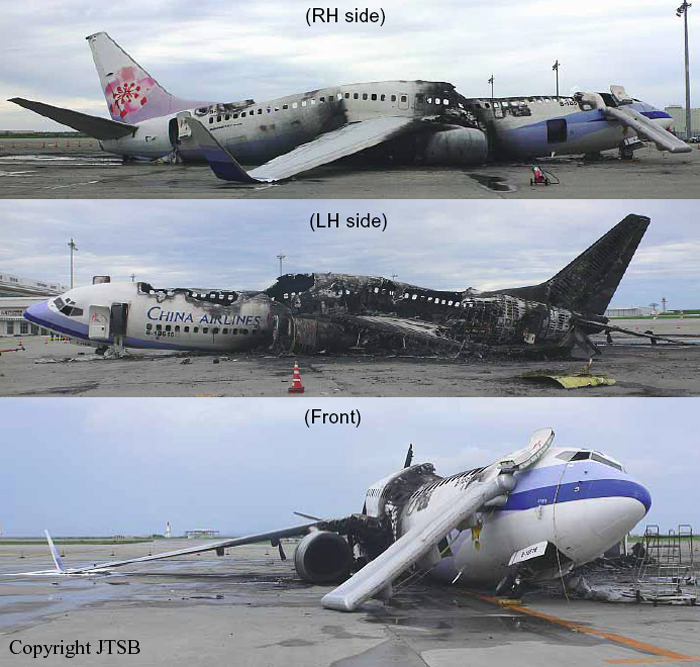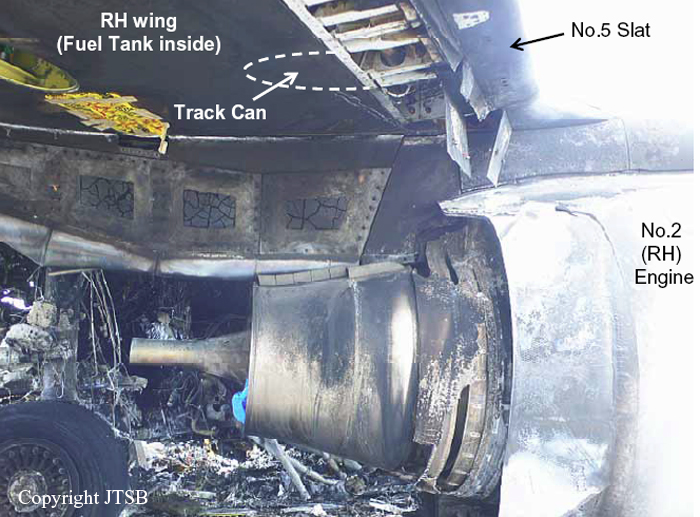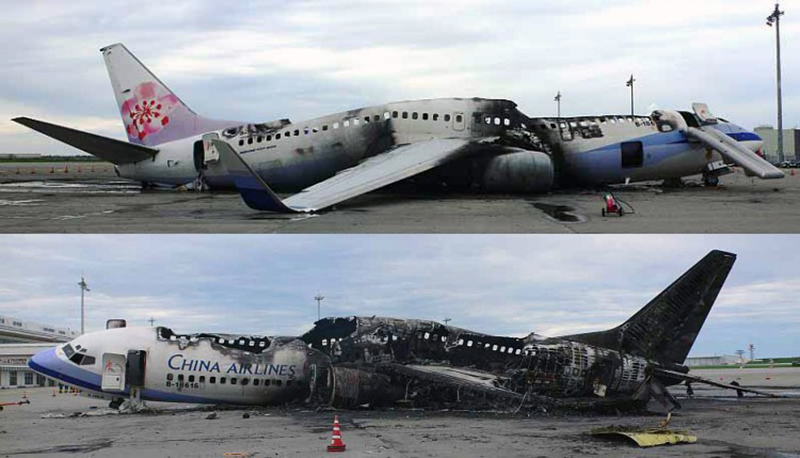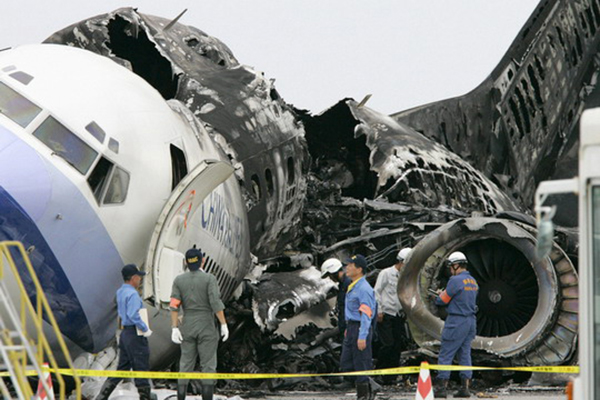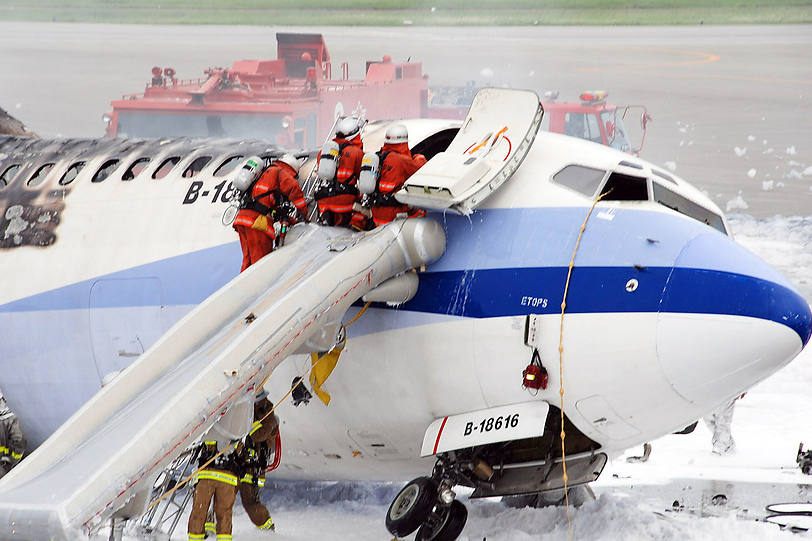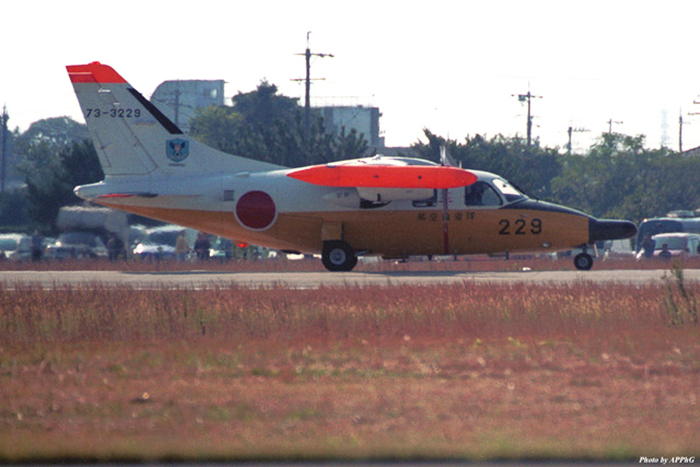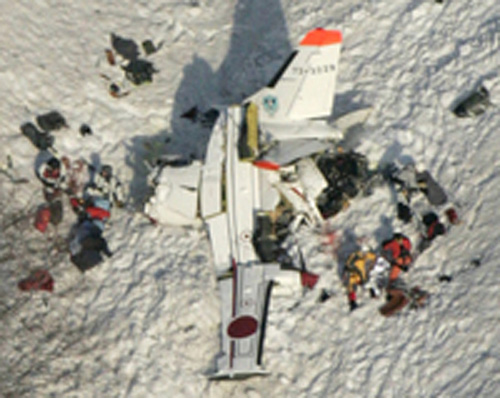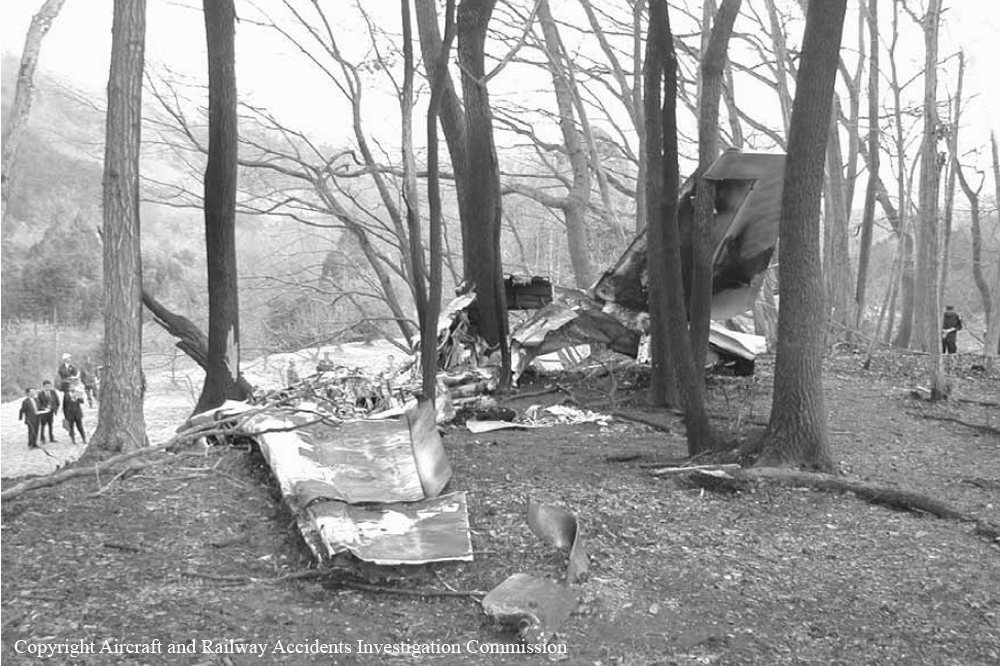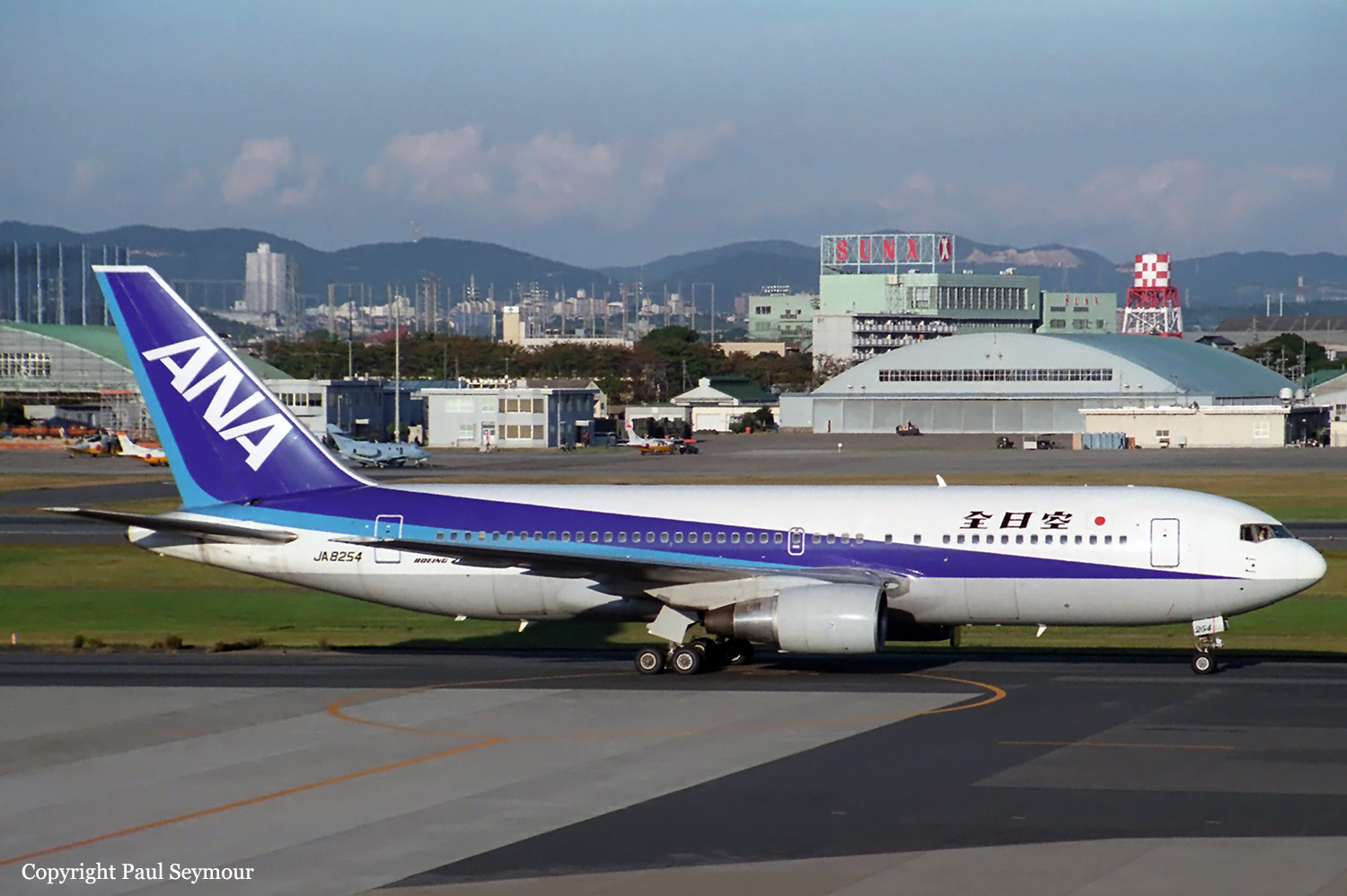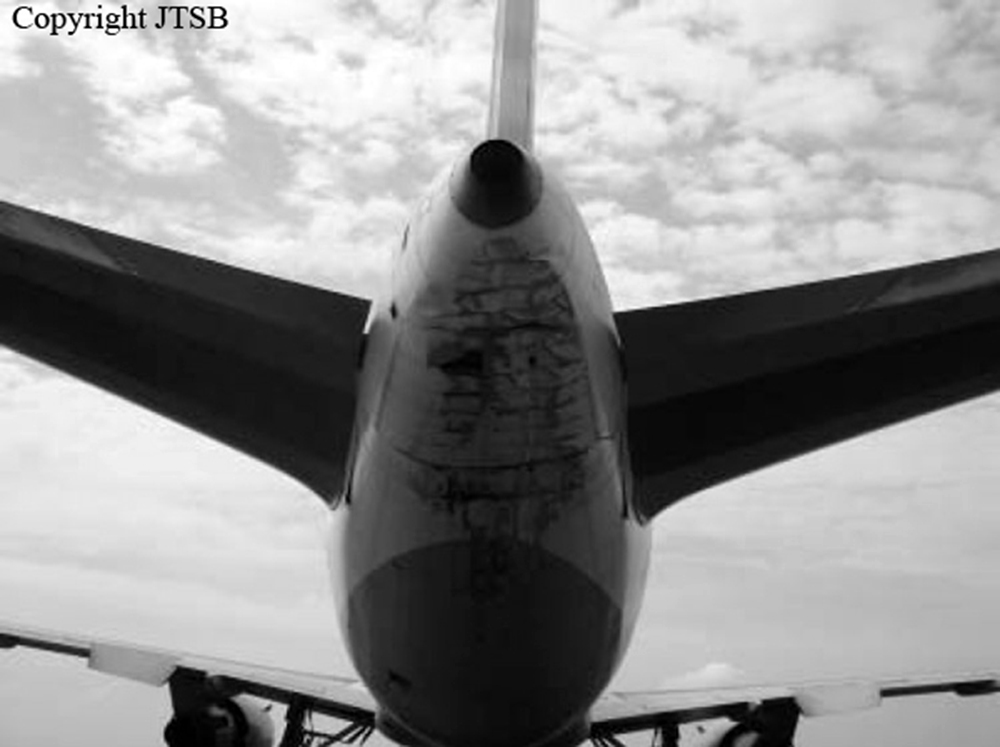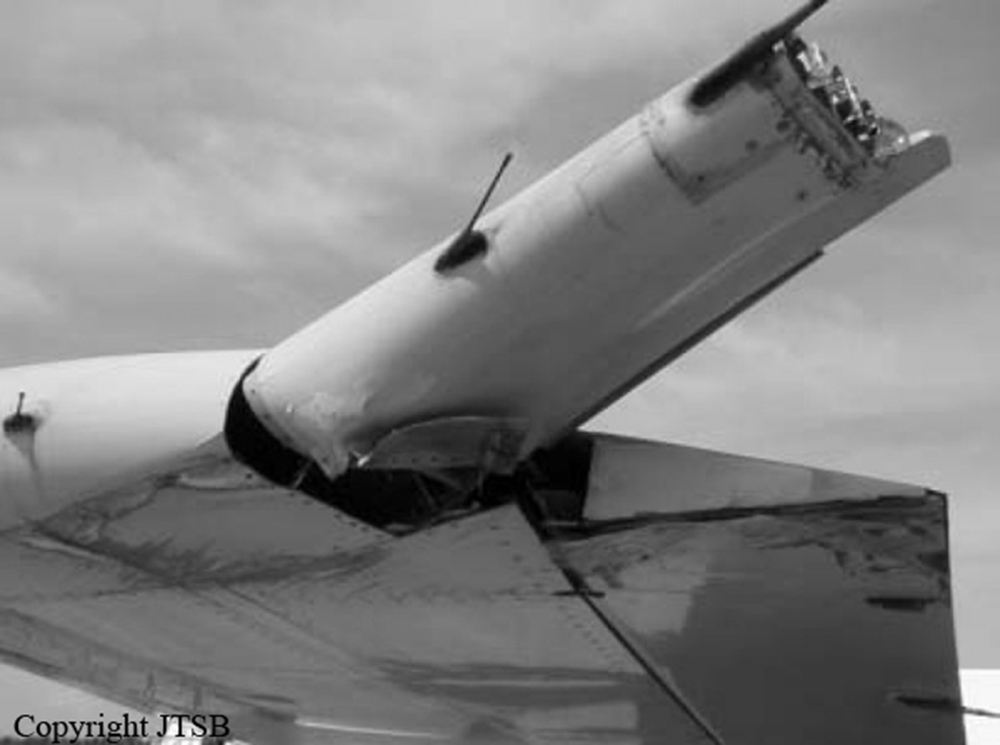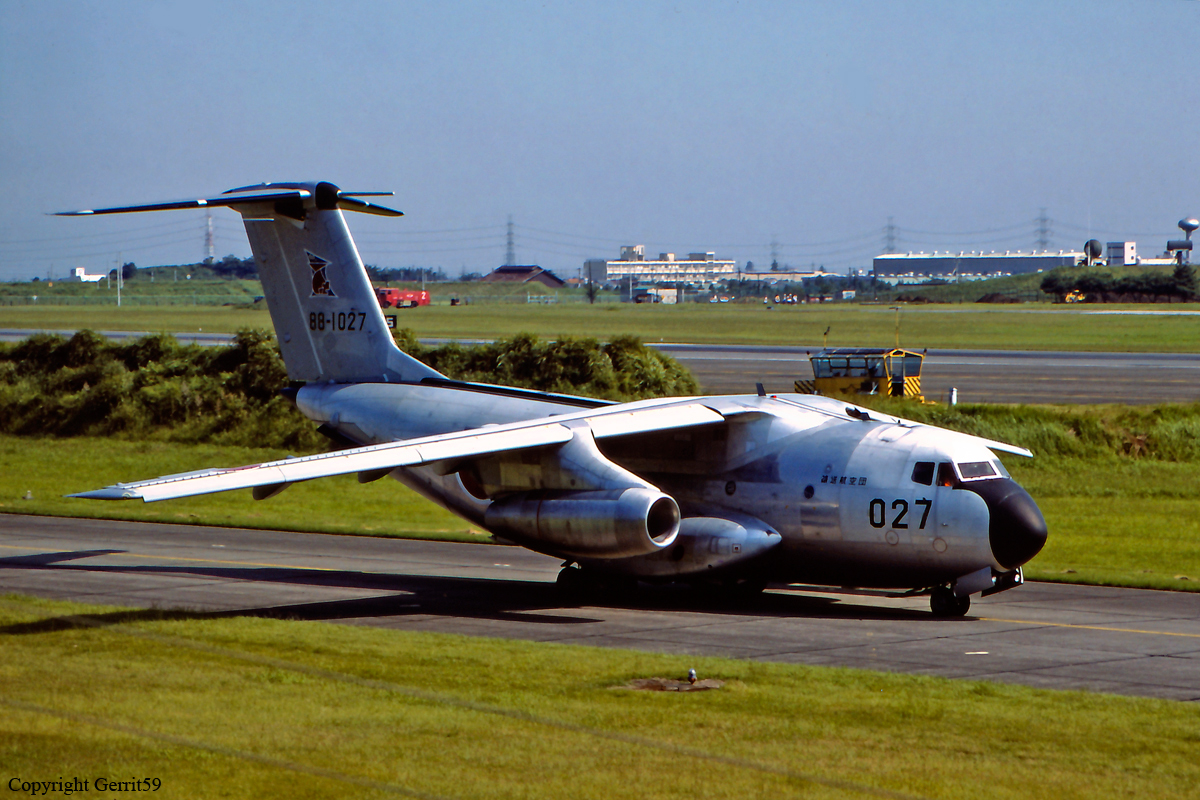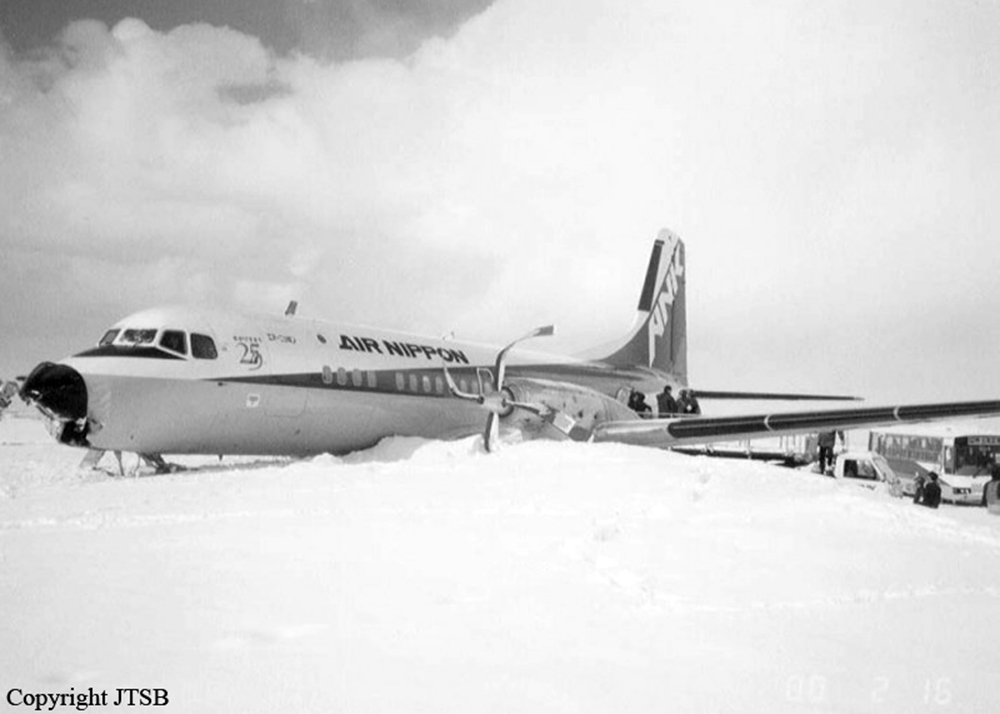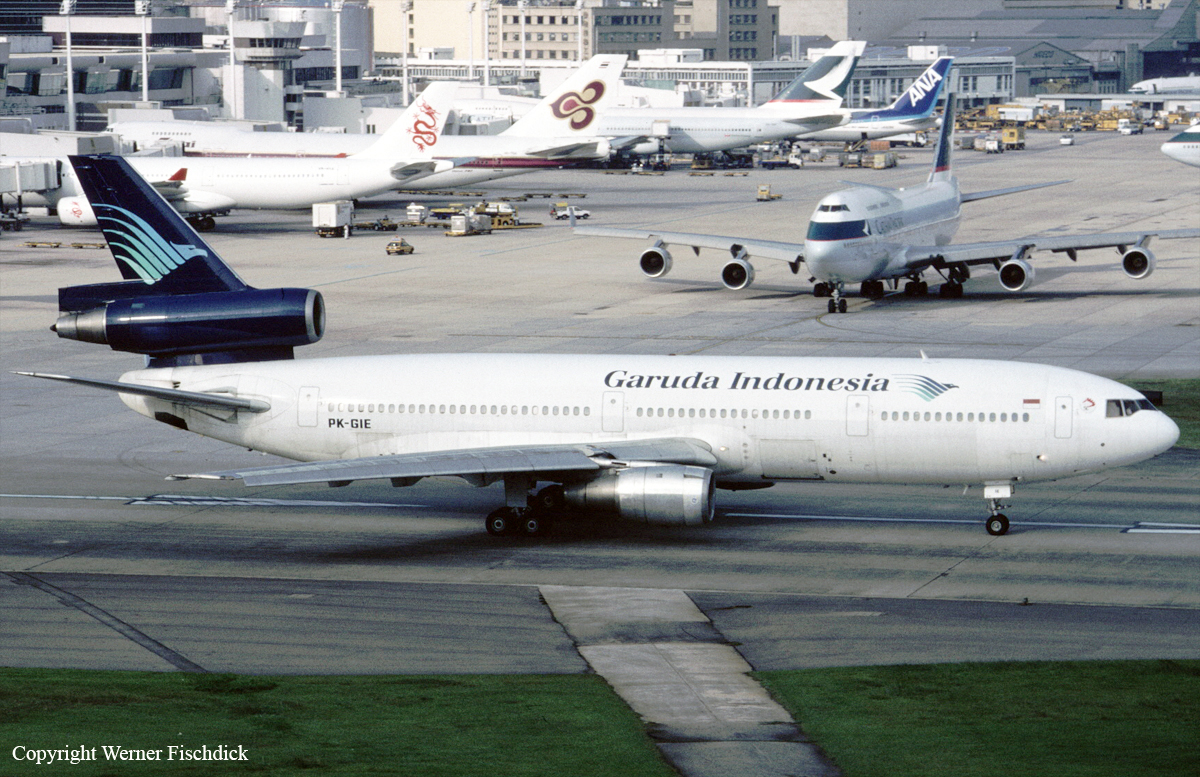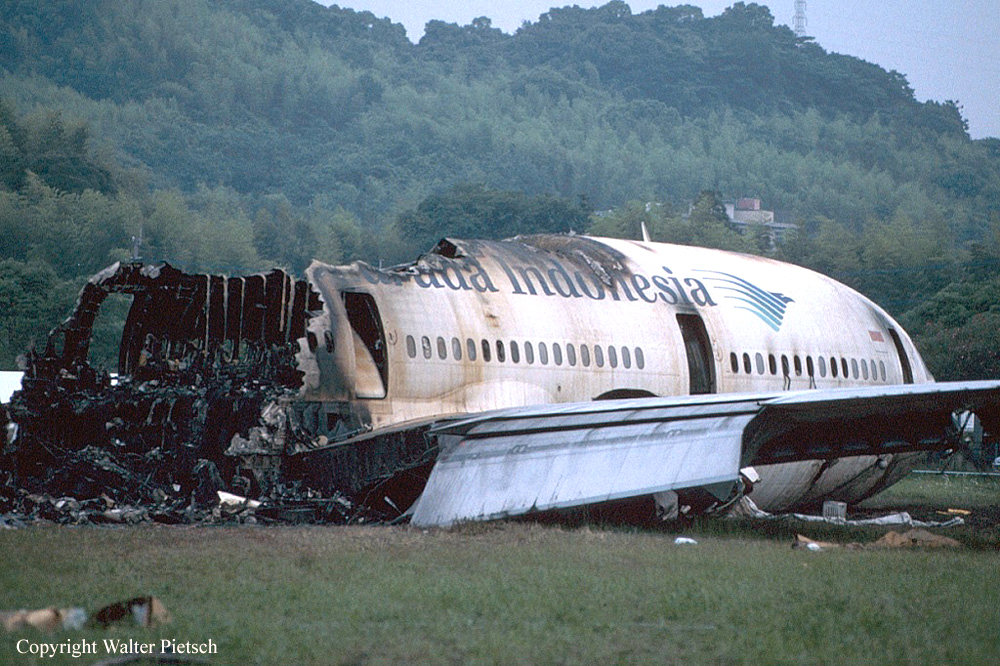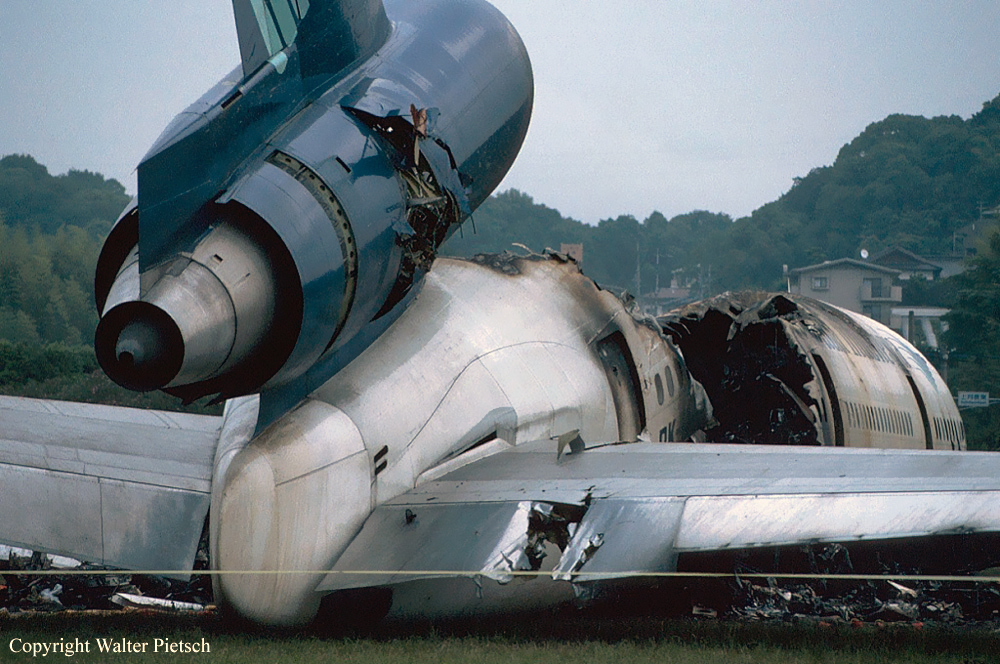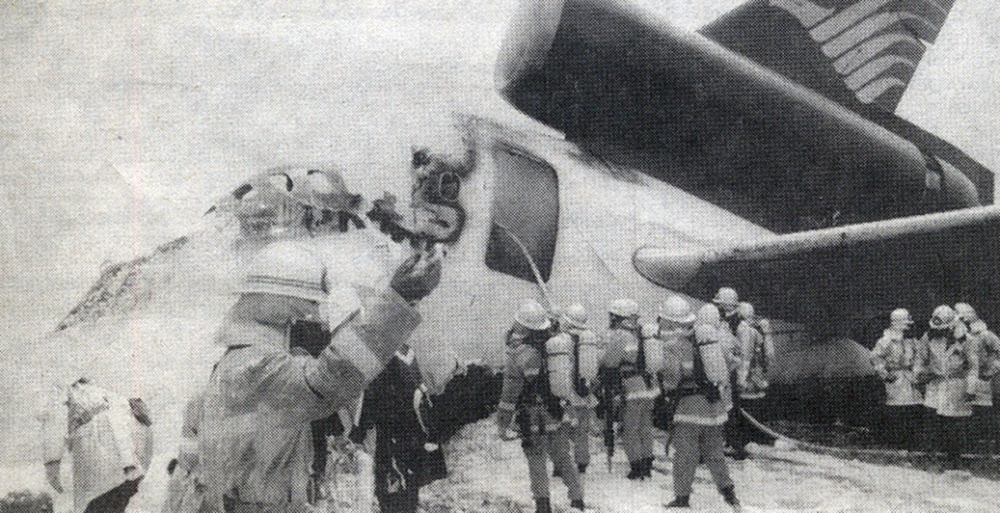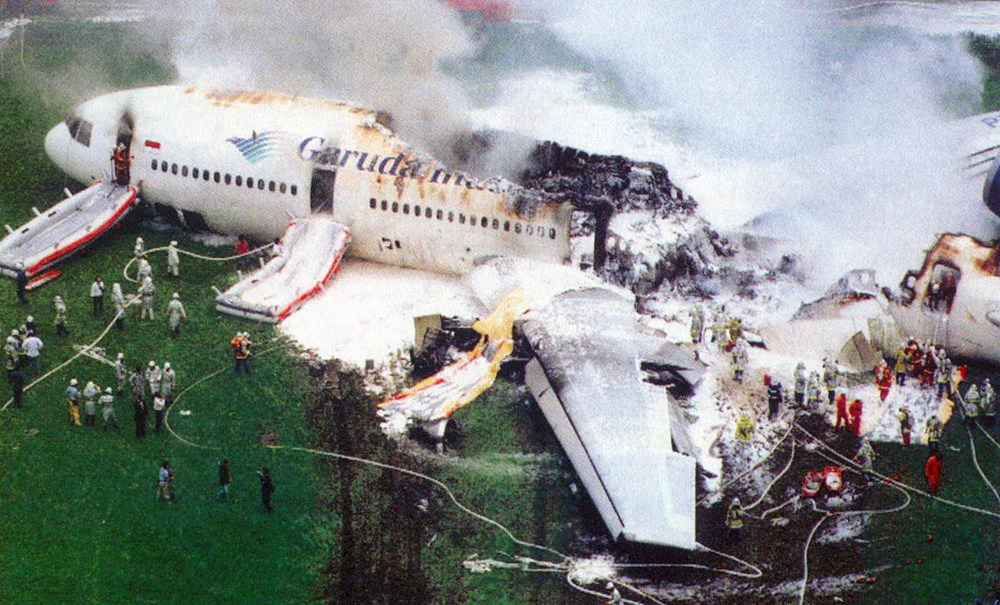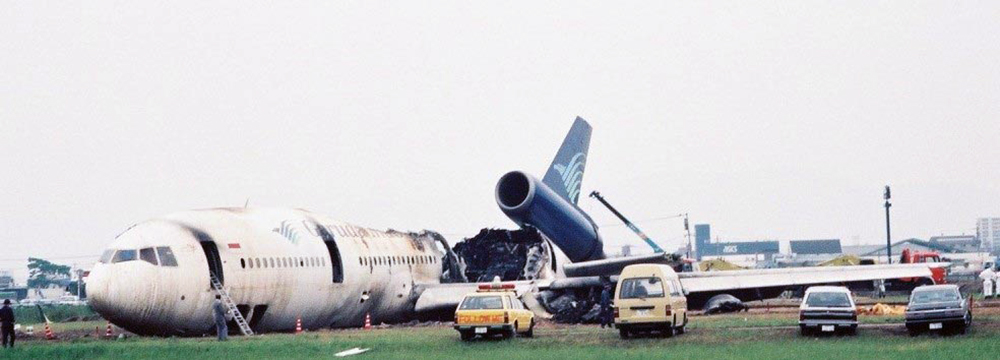Ground fire of a Boeing 737-809 in Naha
Date & Time:
Aug 20, 2007 at 1033 LT
Registration:
B-18616
Survivors:
Yes
Schedule:
Taipei - Naha
MSN:
30175/1182
YOM:
2002
Flight number:
CI120
Crew on board:
8
Crew fatalities:
Pax on board:
157
Pax fatalities:
Other fatalities:
Total fatalities:
0
Captain / Total hours on type:
3823.00
Copilot / Total hours on type:
182
Aircraft flight hours:
13664
Circumstances:
The aircraft departed Taipei-Taoyuan Airport at 0814LT on a schedule service to Naha with 157 passengers and a crew of 8. Following an uneventful flight, the crew was cleared to land on runway 18 and vacated via taxiway E6 then A5. After being stopped at spot 41, engines were shot down when a fire broke out somewhere in an area aft of the right engine and spread to the right wing leading edge near the n°5 slat and the apron surface below the right engine. All 165 occupants evacuated safely while the aircraft was totally destroyed by fire.
Probable cause:
It is considered highly probable that this accident occurred through the following causal chain: When the Aircraft retracted the slats after landing at Naha Airport, the track can that housed the inboard main track of the No. 5 slat on the right wing was punctured, creating a hole. Fuel leaked out through the hole, reaching the outside of the wing. A fire started when the leaked fuel came into contact with high-temperature areas on the right engine after the Aircraft stopped in its assigned spot, and the Aircraft burned out after several explosions. With regard to the cause of the puncture in the track can, it is certain that the downstop assembly having detached from the aft end of the above-mentioned inboard main track fell off into the track can, and when the slat was retracted, the assembly was pressed by the track against the track can and punctured it. With regard to the cause of the detachment of the downstop assembly, it is considered highly probable that during the maintenance works for preventing the nut from loosening, which the Company carried out on the downstop assembly about one and a half months prior to the accident based on the Service Letter from the manufacturer of the Aircraft, the washer on the nut side of the assembly fell off, following which the downstop on the nut side of the assembly fell off and then the downstop assembly eventually fell off the track. It is considered highly probable that a factor contributing to the detachment of the downstop assembly was the design of the downstop assembly, which was unable to prevent the assembly from falling off if the washer is not installed. With regard to the detachment of the washer, it is considered probable that the following factors contributed to this: Despite the fact that the nut was in a location difficult to access during the maintenance works, neither the manufacturer of the Aircraft nor the Company had paid sufficient attention to this when preparing the Service Letter and Engineering Order job card, respectively. Also, neither the maintenance operator nor the job supervisor reported the difficulty of the job to the one who had ordered the job.
Final Report:



